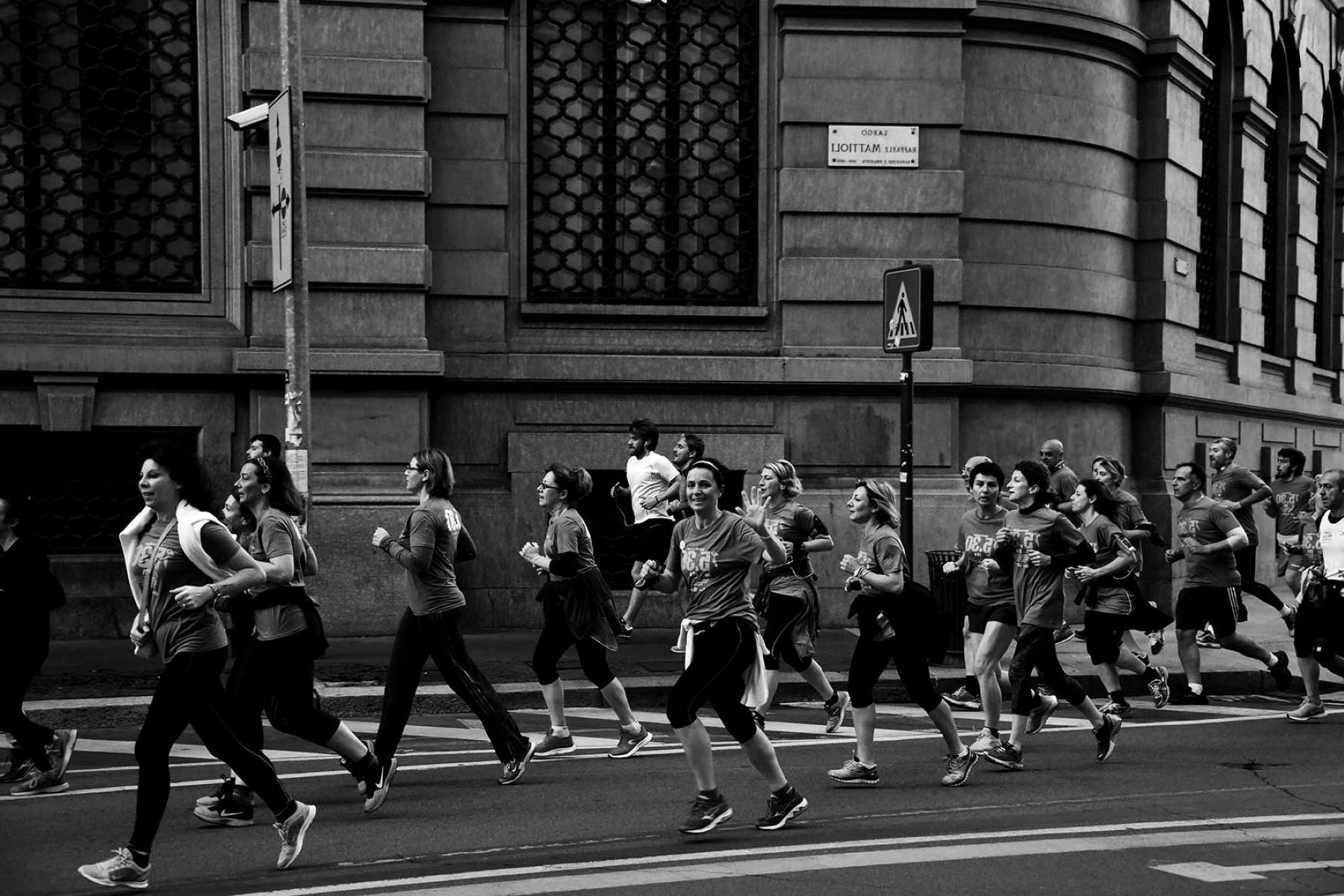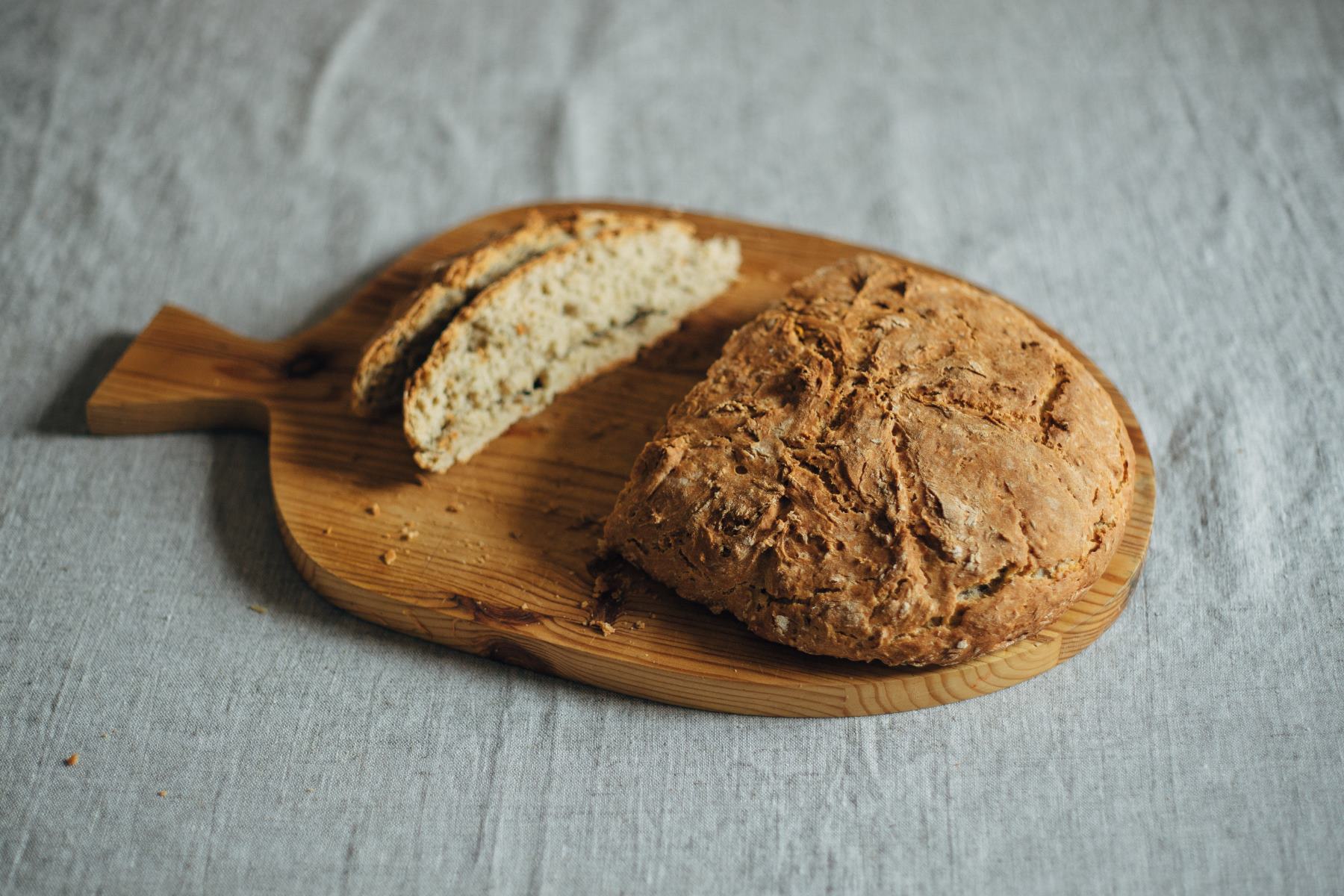Home>Training & Techniques>Converting Running Pace: Chart For Min/Mile To Min/Km


Training & Techniques
Converting Running Pace: Chart For Min/Mile To Min/Km
Published: March 3, 2024
Find the perfect running pace with our conversion chart for minutes per mile to minutes per kilometer. Improve your training and techniques with ease!
(Many of the links in this article redirect to a specific reviewed product. Your purchase of these products through affiliate links helps to generate commission for Therunningadvisor.com, at no extra cost. Learn more)
Table of Contents
Introduction
Running is a popular form of exercise and a competitive sport that has gained immense popularity over the years. Whether you're a seasoned runner or just starting out, understanding and monitoring your running pace is crucial for achieving your fitness goals and improving performance. One of the key aspects of tracking running pace involves converting between different units of measurement, particularly from minutes per mile to minutes per kilometer. This conversion is essential for runners who train using different measurement systems or participate in races with varying distance markers.
In this article, we will delve into the intricacies of running pace and provide a comprehensive guide on converting running pace from minutes per mile to minutes per kilometer. Additionally, we will explore the practical application of a conversion chart, offering valuable insights for runners looking to optimize their training and race performance. Whether you're aiming to complete a marathon, improve your personal best, or simply enjoy the physical and mental benefits of running, understanding how to convert running pace is a valuable skill that can enhance your overall running experience.
By mastering the art of pace conversion and utilizing the provided chart, you can seamlessly adapt to different measurement systems, accurately monitor your speed, and make informed decisions during training and races. Furthermore, we will share practical tips for enhancing your running pace, empowering you to achieve new milestones and conquer your fitness objectives. So, lace up your running shoes and get ready to embark on a journey to unlock the full potential of your running performance.
Understanding Running Pace
Running pace is a fundamental metric that measures the speed at which a runner covers a certain distance. It is commonly expressed as the time taken to complete one unit of distance, such as a mile or kilometer. Understanding running pace is essential for runners of all levels, as it provides valuable insights into performance, endurance, and overall fitness.
When discussing running pace, it's important to distinguish between two primary units of measurement: minutes per mile (min/mile) and minutes per kilometer (min/km). These units represent the time it takes to cover one mile or one kilometer, respectively. For instance, a running pace of 8 min/mile indicates that it takes 8 minutes to complete one mile, while a pace of 5 min/km signifies that it takes 5 minutes to cover one kilometer.
Running pace serves as a crucial indicator of a runner's speed and endurance. It allows individuals to set and monitor their performance goals, track improvements over time, and tailor their training regimens to achieve specific targets. Moreover, understanding running pace enables runners to gauge their energy expenditure and adjust their speed during races or training sessions, optimizing their overall performance and minimizing the risk of exhaustion.
In addition to its practical applications, running pace also plays a significant role in race strategies and pacing techniques. For example, marathon runners often rely on maintaining a consistent pace throughout the race to conserve energy and avoid premature fatigue. By understanding their ideal pace in both min/mile and min/km, runners can effectively plan their race strategies, anticipate their performance at various distances, and make informed decisions during competitions.
Furthermore, running pace is a versatile metric that transcends individual training, as it facilitates communication and comparison among runners. Whether discussing training plans with coaches, sharing race experiences with fellow runners, or analyzing professional athletes' performances, the ability to comprehend and articulate running pace in different units is invaluable for fostering a cohesive and supportive running community.
In essence, understanding running pace goes beyond mere numerical values; it embodies the essence of a runner's journey, reflecting dedication, perseverance, and the pursuit of personal excellence. By grasping the intricacies of running pace and its implications, runners can harness this knowledge to elevate their training, conquer new challenges, and embrace the transformative power of running.
In the next section, we will delve into the practical aspects of converting running pace from min/mile to min/km, providing a valuable resource for runners seeking to navigate between different measurement systems with ease.
Converting Min/Mile to Min/Km
Converting running pace from minutes per mile (min/mile) to minutes per kilometer (min/km) is a crucial skill for runners who encounter varying measurement systems during their training and races. While the United States typically uses the imperial system, which measures pace in min/mile, many other countries and international races utilize the metric system, expressing pace in min/km. Understanding how to convert between these two units empowers runners to seamlessly adapt to different race environments and training scenarios.
To convert min/mile to min/km, a straightforward mathematical relationship can be employed. The conversion factor between miles and kilometers is 1.60934. Therefore, to convert min/mile to min/km, the min/mile pace is multiplied by the conversion factor. This yields the equivalent pace in min/km. The formula for this conversion is:
[ text{Pace (min/km)} = text{Pace (min/mile)} times 1.60934 ]
For example, if a runner maintains a pace of 8 min/mile, the conversion to min/km would be:
[ 8 , text{min/mile} times 1.60934 = 12.87 , text{min/km} ]
Conversely, converting min/km to min/mile involves dividing the min/km pace by the conversion factor. The formula for this conversion is:
[ text{Pace (min/mile)} = text{Pace (min/km)} div 1.60934 ]
By understanding and applying these conversion formulas, runners can effortlessly switch between min/mile and min/km pacing, ensuring consistency and accuracy in their training and race strategies. This proficiency in pace conversion enables runners to interpret and compare pace data across different platforms, training devices, and race settings, fostering a comprehensive understanding of their performance metrics.
Moreover, mastering the conversion from min/mile to min/km equips runners with the adaptability and versatility needed to thrive in diverse running environments. Whether participating in local races or international marathons, the ability to swiftly convert pace units empowers runners to make real-time adjustments, set realistic pacing goals, and maintain optimal performance regardless of the measurement system in use.
In the subsequent section, we will explore the practical application of a conversion chart, offering a user-friendly tool for runners to streamline their pace conversion process and maximize their running experience.
Using the Conversion Chart
Utilizing a conversion chart is a practical and efficient method for seamlessly transitioning between different units of running pace, specifically from minutes per mile (min/mile) to minutes per kilometer (min/km) and vice versa. This visual aid serves as a valuable resource for runners, providing instant access to accurate pace conversions and eliminating the need for manual calculations during training sessions and races.
A well-designed conversion chart typically features a grid or table format, displaying a range of min/mile paces alongside their corresponding min/km equivalents. This user-friendly layout allows runners to quickly locate their current pace in one unit and effortlessly identify its equivalent value in the alternate unit. By referencing the conversion chart, runners can efficiently adapt to varying measurement systems, ensuring consistent pacing and precise performance monitoring across different race environments and training scenarios.
Moreover, conversion charts are often accompanied by clear and intuitive design elements, such as color coding, bold typography, or graphical indicators, which enhance readability and accessibility. These visual cues enable runners to swiftly identify their desired pace conversion, even in fast-paced race settings or during intense training sessions. The seamless integration of visual aids in the conversion chart streamlines the pace conversion process, empowering runners to make informed decisions and adjustments on the fly.
In addition to its practical utility, a conversion chart serves as a valuable educational tool, fostering a deeper understanding of pace conversion principles among runners of all levels. By regularly consulting the chart and observing the relationships between min/mile and min/km paces, runners can develop a nuanced comprehension of pace conversion, enhancing their overall proficiency in managing and interpreting running metrics.
Furthermore, the accessibility and portability of conversion charts make them an indispensable asset for runners across diverse settings. Whether printed and laminated for outdoor training, integrated into digital running apps, or featured in race event materials, conversion charts provide a universal reference point for runners navigating the intricacies of pace conversion. This widespread availability ensures that runners can confidently adapt to different measurement systems, harnessing the full potential of their running performance regardless of geographical or logistical constraints.
In essence, the utilization of a conversion chart empowers runners to transcend the limitations of measurement systems, enabling seamless pace adaptation and informed decision-making. By incorporating this practical tool into their running arsenal, individuals can confidently navigate the global landscape of running events, optimize their training regimens, and embrace the universal language of running pace with clarity and precision.
Tips for Improving Running Pace
Improving running pace is a common goal for runners seeking to enhance their performance, achieve personal milestones, and elevate their overall running experience. Whether aiming to set a new personal best, conquer longer distances, or simply enjoy the exhilarating sensation of running at a faster pace, there are several effective strategies that can contribute to noticeable improvements in running speed and endurance.
Read more: Unlocking The Secrets Of Running Pace
1. Incorporate Interval Training
Interval training, characterized by alternating periods of high-intensity effort and active recovery, is a potent method for boosting running pace. By integrating short bursts of sprinting or fast-paced running into training sessions, runners can enhance their speed, cardiovascular fitness, and muscular endurance. This structured approach to interval training stimulates physiological adaptations that translate into improved overall pace and race performance.
2. Focus on Strength and Flexibility
Building strength and flexibility through targeted exercises and cross-training activities can significantly impact running pace. Strengthening key muscle groups, such as the quadriceps, hamstrings, and core, contributes to enhanced running mechanics and power generation. Additionally, maintaining flexibility through yoga, Pilates, or dynamic stretching routines can improve stride length, reduce the risk of injury, and promote fluid, efficient movement at higher speeds.
3. Implement Tempo Runs
Tempo runs, also known as threshold runs, involve sustained efforts at a comfortably hard pace, typically near a runner's lactate threshold. By incorporating tempo runs into training schedules, runners can improve their ability to sustain faster paces over extended distances. This targeted approach to tempo running enhances aerobic capacity, mental resilience, and the ability to maintain a challenging pace, ultimately leading to improved overall running speed.
4. Prioritize Rest and Recovery
Adequate rest and recovery are essential components of any effective training plan aimed at improving running pace. Allowing the body sufficient time to recover from intense workouts and long runs is crucial for preventing overtraining, minimizing the risk of injury, and optimizing performance gains. Embracing rest days, incorporating gentle recovery activities, and prioritizing quality sleep are integral to the overall progression of running pace.
Read more: Determining The Optimal Pace For Long Runs
5. Fine-Tune Running Form
Refining running form and biomechanics can have a profound impact on running pace and efficiency. Focusing on proper posture, arm swing, foot strike, and cadence can minimize energy wastage and enhance propulsion, leading to smoother, more economical running at faster speeds. Engaging in gait analysis, seeking feedback from experienced runners or coaches, and practicing mindful running techniques can contribute to noticeable improvements in pace and performance.
6. Set Realistic and Progressive Goals
Setting realistic and progressive pace goals is essential for sustained improvement in running speed. By establishing incremental targets and gradually increasing training intensity, runners can systematically enhance their pace while minimizing the risk of burnout or injury. This strategic approach to goal setting fosters a sense of accomplishment and motivation, driving continuous progress in running pace over time.
Incorporating these tips into a comprehensive training regimen can yield tangible improvements in running pace, empowering runners to achieve their desired speed and performance outcomes. By embracing a holistic approach to training, focusing on targeted workouts, and nurturing a mindset of continuous improvement, runners can unlock their full potential and experience the exhilaration of running at their optimal pace.
Conclusion
In conclusion, mastering the art of pace conversion and understanding the nuances of running pace is essential for runners of all levels. The ability to seamlessly transition between minutes per mile (min/mile) and minutes per kilometer (min/km) empowers individuals to adapt to diverse race environments, accurately monitor their performance, and make informed decisions during training and competitions. By delving into the practical aspects of pace conversion and the utilization of a conversion chart, runners can navigate the global landscape of running events with confidence and precision.
Furthermore, the insights shared in this article shed light on the multifaceted significance of running pace, extending beyond numerical values to embody the essence of a runner's journey. From setting and monitoring performance goals to refining race strategies and fostering a cohesive running community, understanding running pace serves as a catalyst for personal growth, resilience, and the pursuit of excellence.
The comprehensive guide on converting min/mile to min/km, coupled with practical tips for improving running pace, equips runners with the knowledge and tools needed to elevate their training regimens, conquer new challenges, and embrace the transformative power of running. By incorporating interval training, focusing on strength and flexibility, implementing tempo runs, prioritizing rest and recovery, fine-tuning running form, and setting progressive goals, runners can embark on a journey of continuous improvement, culminating in enhanced speed, endurance, and overall running performance.
Ultimately, the journey of pace conversion and performance enhancement is a testament to the unwavering dedication, passion, and resilience that define the running community. As runners lace up their shoes and embark on the exhilarating pursuit of their pace goals, they embody the spirit of perseverance, camaraderie, and the relentless pursuit of personal bests. With a deep understanding of running pace and the practical tools at their disposal, runners can transcend boundaries, conquer new horizons, and experience the sheer joy of running at their optimal pace, embracing every stride as a testament to their unwavering commitment to the sport.
In essence, the journey of pace conversion and performance enhancement is a testament to the unwavering dedication, passion, and resilience that define the running community. As runners lace up their shoes and embark on the exhilarating pursuit of their pace goals, they embody the spirit of perseverance, camaraderie, and the relentless pursuit of personal bests. With a deep understanding of running pace and the practical tools at their disposal, runners can transcend boundaries, conquer new horizons, and experience the sheer joy of running at their optimal pace, embracing every stride as a testament to their unwavering commitment to the sport.














